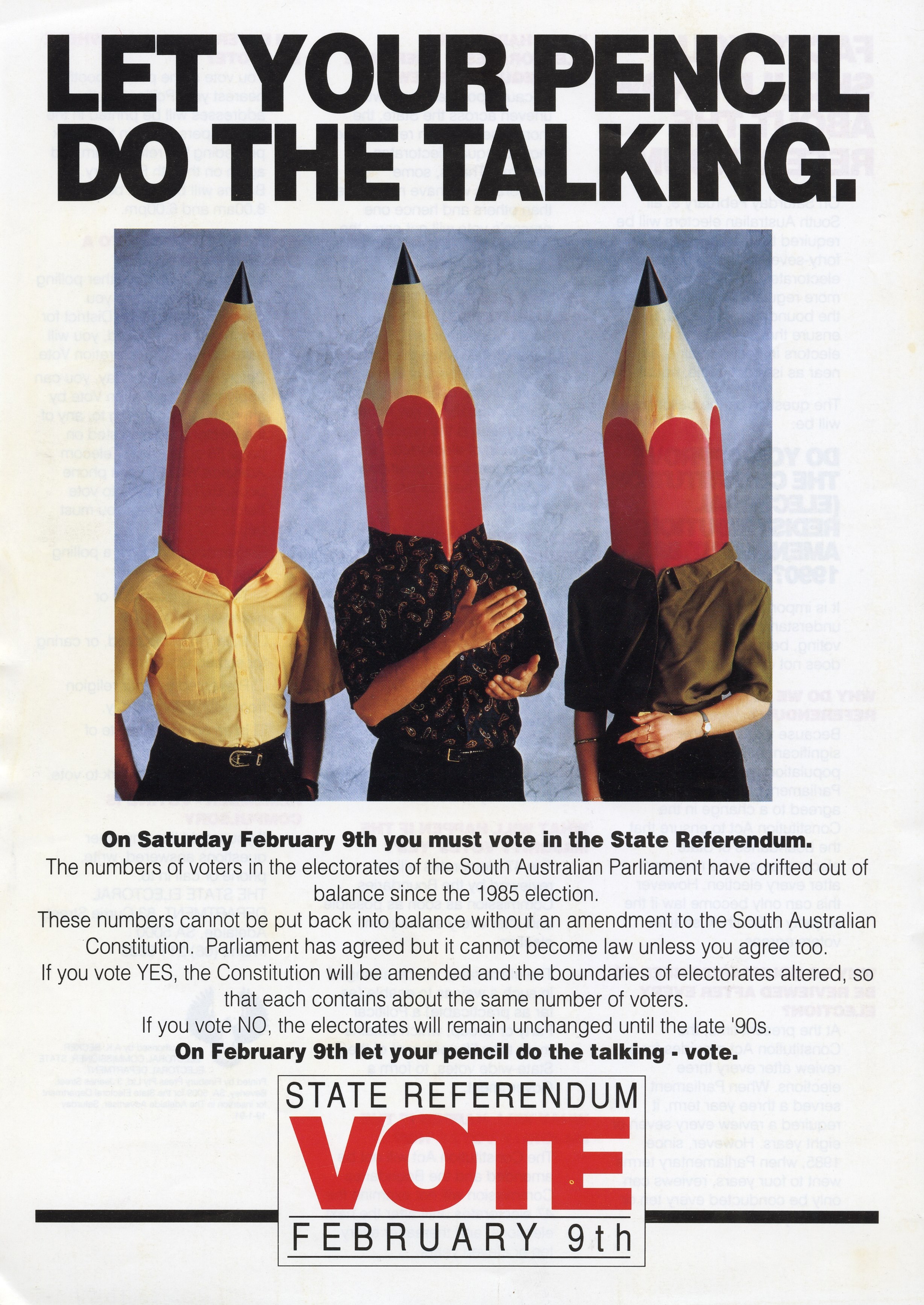As the Federal Referendum on the Voice to Parliament draws closer, it provides us with an opportunity to reflect on the historical and legislative context that has led to this political moment, on both a state and federal level.
Adelaide has now been the location for two milestone events in the lead up to the 2023 referendum. In February, the Yes campaign director, Quandamooka man of Minjerribah Dean Parker, officially launched the national Yes campaign from Tandanya, the National Aboriginal Cultural Institute. While on 30 August, Prime Minister Anthony Albanese announced the date of the Voice to Parliament referendum at a venue in Elizabeth. The spotlight on South Australia is significant in the context of our recently passed legislation to introduce a State Voice to Parliament (March 2023) and in the state’s history of recognition of Indigenous rights.
Constitutional Change by Parliament and the People
On Sunday 26 March 2023, a special sitting of the South Australian Parliament passed legislation for a State Voice to Parliament. The bill was assented to by South Australia’s Governor, Her Excellency the Honourable Frances Adamson AC, immediately afterwards in a meeting of the State’s Executive Council on the steps of Parliament House in front of a crowd of onlookers. The First Nations Voice Act 2023 (SA) amended the South Australian Constitution to recognise the voices of First Nations people. The South Australian Constitution is an act of Parliament which means that, unlike the Commonwealth, no referendum is needed to make amendments.[1]
Establishing Constitutional Recognition of Aboriginal peoples involves altering the Australian Constitution and therefore requires an extra step in the process beyond passing both Houses of Parliament: a referendum. The Federal Government has committed to enacting the Uluru Statement From the Heart, including enshrining the Voice to Parliament within the Constitution. There are a couple of reasons for this. Firstly, it will recognise First Nations people as the first people of Australia. Currently there is no mention of this fact within the Australian Constitution. Secondly, writing the Voice to Parliament into the Constitution safeguards this decision, with subsequent governments unable to dismantle the Voice. Over the past five decades there have been multiple examples of representative national Aboriginal and Torres Strait Islander bodies being dismantled upon a change of government. [2] Each time, this has impacted significantly with the interruption of funding and the disruption of programs for First Nations people.
Holding a Referendum
The Australian Constitution can only be changed with the approval of the people of Australia. This is done through a referendum where a yes or no question is put to all eligible voters. State and Federal Parliament hold the power to call a referendum to change their respective constitutions.
At a state level, South Australia was the first Australian colony to hold a referendum. It took place on 25 April 1896 and concerned the education system of South Australia. Three questions were put to voters and the referendum passed, ensuring the continuation of free, compulsory and secular education across the state.[3]
South Australia has held nine referendums between 1896 and 1991 containing twelve proposals for change. Voters approved eight of these twelve proposals. The proposals under consideration have varied from whether or not South Australians supported becoming a Federation (1898 and 1899, Yes), increased salaries for Members of Parliament (1911, No) and changing electoral boundaries (1991, Yes) to 6pm bar closing times (1915, Yes), late night shopping hours (1970, No) and whether we should adopt Daylight Saving time (1982, Yes).[4]

While South Australia’s record of enacting change through state referendums is impressive, at a federal level, constitutional change has proven much harder to achieve. Yes votes are harder to pass in federal referendums due to the need for a double majority. This means that not only do a majority of Australian voters have to vote Yes, but also a majority of voters in the majority of states also have to vote Yes. Federally, there have been 44 proposals for constitutional change put to voters since the first federal referendum in 1906 and only eight of these have received a Yes vote.[5] Seven out of these eight were unanimous with all states voting in favour.
The last time Australians were asked to vote on a federal referendum was in 1999. Two proposed laws were put to voters: one to establish Australia as a republic and the other to insert a preamble that recognised Aboriginal and Torres Strait Islander peoples. The result in 1999 for all states and territories on both questions was No, except for the ACT who voted Yes to a republic. Join us over the next three weeks as we provide some of the historical context for how we got here, what Voice to Parliament means and how to engage with the debate as an active citizen.
[1] Legal Services Commission South Australia, Voice to Parliament, 11 July 2023, https://www.lawhandbook.sa.gov.au/ch27s03s01.php#:~:text=The%20Act%20amends%20the%20Constitution,(SA)%20s%203%5D.
[2] James Haughton, Social Policy, ‘Former Aboriginal and Torres Strait Islander Australian Government representative and advisory bodies: a quick guide’, 16 June 2023, https://www.aph.gov.au/About_Parliament/Parliamentary_departments/Parliamentary_Library/pubs/rp/rp2223/Quick_Guides/FormerAboriginalandTorresStraightIslanderRepresentativeBodies.
[3] Electoral Commission of South Australia, South Australian Referenda, 2005. This edition of the Research Series can be accessed from here: https://ecsa.sa.gov.au/index.php?option=com_content&view=article&id=144:referenda&catid=12&Itemid=105
[4] Ibid.
[5] Australian Electoral Commission, ‘Referendums’, 2023, https://www.aec.gov.au/elections/referendums/





